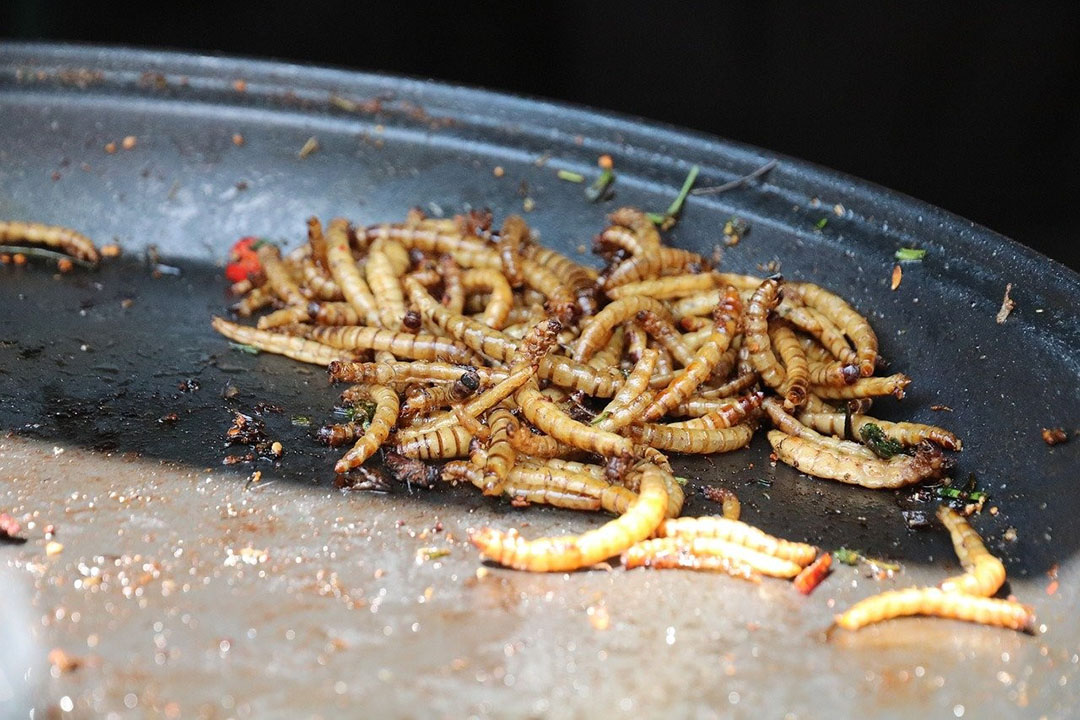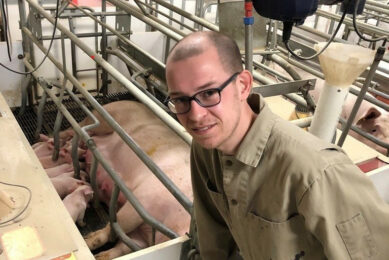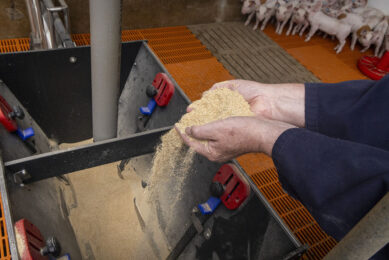Chickens prefer eating insect larvae meal

The use of insects as an alternative ingredient in the poultry feed industry is a promising solution to optimise animal production systems worldwide. A study set out to determine whether broilers displayed a preference (or not) for Tenebrio molitor mealworm by evaluating ingredient acceptability and bird performance.
Edible insects have been shown to be highly nutritious and are rich in protein (47-60%) and fat (31-43%). Chickens have the natural behaviour of picking up a variety of insects during their entire lifecycle and eating them voluntarily, and these insects may represent a part of the bird’s ingested food. Moreover, studies have shown that birds are able to self-select available feedstuffs in order to balance their own diet, thereby meeting nutritional requirements. Considering that insect meal has a similar protein content to soybean meal, and soy cultivation requires vast areas of arable land and leads to some environmental damage, it is feasible to suggest that insects can be introduced in feed formulation for chickens.
The mealworm study in broiler chickens
In this study, which was conducted at the Department of Animal Science, University of São Paulo, Brazil, and published on MDPI, a total of 60, 14-day-old male Ross AP95 broilers of uniform body weight (~459 g) were assigned to 2 treatment groups in a cafeteria-type study:
- the control group,
- and the mealworm group.
Feeders of the control group contained a complete standard diet whereas feeders of the mealworm group contained one of the following ingredients: ground corn, extruded semi-whole soybean, vitamin-mineral supplement mixture, and mealworm. Up to day 17, corn was the ingredient consumed in greatest amount by the birds, but from day 18 until day 24, there was a shift in this trend and after that (day 25) the intake of mealworm was superior compared to all other components. Extruded semi-whole soybean meal and supplement mixture were the least preferred ingredients.
Insect meal as new protein source
The popularity of insect meal as a new protein has taken off – find out about new developments, regulations and innovations.
Growth performance and feed conversion
When evaluating growth performance of the birds, feed intake of the balanced complete diet and weight gain of the birds of the control group in the 3 evaluation periods (days 15 – 21, days 22 – 28 and days 29 – 32) were higher than in the mealworm group (p < 0.02). For feed conversion ratio, no difference was observed between birds of the control group (1.76) and those of the mealworm group (2.15) in the period from days 15 – 21 (p = 0.418). However, feed conversion from days 22 to 28 of age were statistically different, with average values of 1.22 for the mealworm group compared to 1.59 for the control group (p = 0.004), and the same trend was observed from days 29 – 32, in which the feed conversion of the mealworm group (1.36) was better than that of the control group (1.63, p = 0.014). Overall, although insect-derived products are still under regulation processes worldwide, the increasing knowledge concerning this topic indicates that insects could be a suitable alternative as feed source in the animal industry.
A study conducted with Konkuk University in Seoul, South Korea, set out to determine if black soldier fly larvae oil could impact growth performance and gut health in fast-growing broiler chickens.











